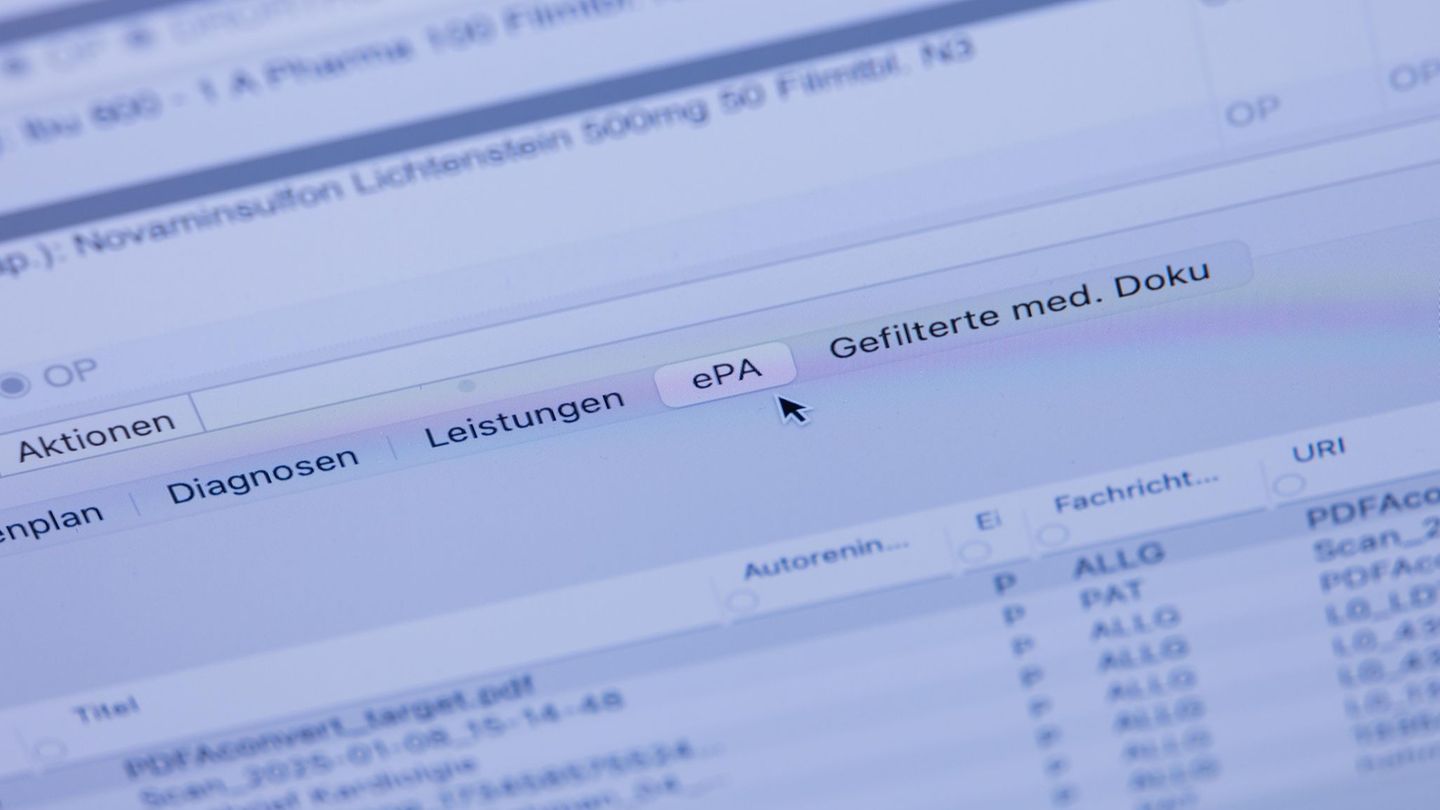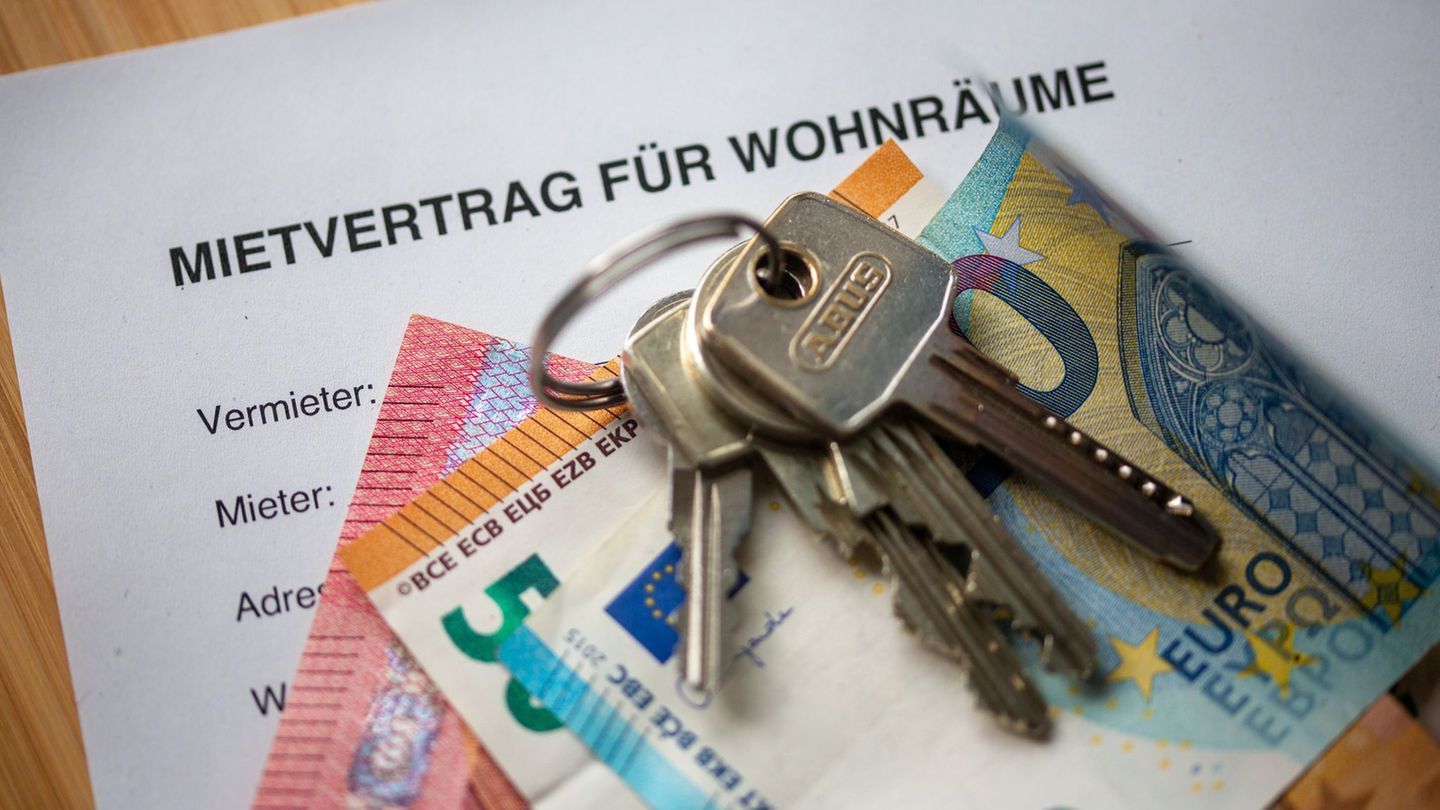Digitalization
What does the major ePA operation bring?
Copy the current link
They are intended to bring a breakthrough to the slow pace of digitalization in the healthcare system: e-files for important patient data are being used on a mass scale. What awaits insured persons and practices?
For millions of people in practices, clinics and pharmacies, it should now become part of everyday life: the electronic patient file, or ePA for short. After many delays, the major project starts on Wednesday. Important health data such as findings and medication should be available digitally as standard – unless you reject it. Health Minister Karl Lauterbach (SPD) expects enormous improvements in care and research. However, there is still a test phase before nationwide use.
Controlled start in three regions
All legally insured people who have not objected will now gradually have an ePA set up by their health insurance company. According to the ministry, this is likely to take two to four weeks. It is expected that there will be more than 70 million e-files. Concrete operations will start on Wednesday – but not everywhere, but in three model regions. In Hamburg and the surrounding area and in Franconia, more than 250 practices, pharmacies and clinics are to get started and upload data. A third region is in North Rhine-Westphalia.
If the system works stably in the regions, it should also start nationwide. This should only become clear after four weeks at the earliest – so probably not before mid-February. The technical connection in 150,000 health facilities across the country should then be ready to start. There are different ways in which insured people can find out from their health insurance that an ePA is available for them, as the umbrella association says – for example as a push message in the health insurance app or with information on the homepage.
More insights for insured people
For patients, the e-file brings more transparency about findings, laboratory values, diagnoses, medications and billing from their health insurance company. If you want, you can look into your ePA and enter data, but you don’t have to. You can view them via an app from the respective cash register, for example on smartphones, tablets or laptops. What doctors can set and who can access what can be determined in each case. If you change health insurance, you can take the data with you. In general, the ePA remains voluntary; you can still object later and have it deleted.
Important documents bundled
The core goal is to bring together previously scattered data and thus enable better treatment. In practices it is often the case that documents from previous treatments are missing or there is nothing at all, explains the National Association of Statutory Health Insurance Physicians (KBV). Some patients have printouts at home, and data is also stored on computers in the respective practices. In the future, important information should be available at a glance, thereby better avoiding multiple examinations and drug interactions.
The start of the “ePA for all” is intended to bring a breakthrough for the long-stalled digitalization. E-files were already introduced in 2021 as an optional offer that insured persons had to actively take care of. However, they have hardly been used so far: at the beginning of the year there were 1.9 million ePAs for more than 74 million people with statutory health insurance. A law from the traffic light coalition reversed the principle: now everyone gets an ePA unless you actively object (opt-out). According to the National Association of Health Insurance Funds, the objection rate is an average of five percent. Private insurance companies can also offer ePAs.
Right of access for doctors for 90 days
If you insert your insurance card into the practice or clinic, the treating doctors receive access rights to read and fill out the ePA. By default it is valid for 90 days; you can shorten and extend the period via the app. Patients can decide during the consultation if a finding should not be included in the file. In the case of sensitive data, you must also be expressly informed of this right to object, as the ministry explains. The Federal Association of Consumer Organizations insists on uncomplicated settings as to which doctors can see what. “Otherwise the dentist’s office will end up finding out about the psychotherapy treatment.”
Gradually more content
In the future, doctors will be obliged to include important documents in the e-file. Right from the start, a list of medications should also be included, which is automatically created from the now common e-prescriptions. From the summer onwards, a medication plan with additional information about dosages of medicines will be added. The KBV points out that the ePA, as an “insured-managed” file, does not replace the doctors’ own documentation in their respective practice system. Direct communication between practices also remains important, especially since insured people can delete data.
Protection of sensitive health data
Lauterbach assured at the start: “Citizens’ data is safe from hackers.” The Chaos Computer Club had previously warned of possible attacks. The majority-owned digital company Gematik then announced solutions to prevent such scenarios. According to the ministry, the data is stored on servers in data centers in Germany within the protected data highway of the healthcare system. In general, every access to the ePA is logged with date and time. Only file formats that do not transmit viruses should be uploaded to the ePA.
There are also security requirements for insured people when they first log in to the ePA app. An electronic identity card with a secret number (PIN) is needed – or the electronic health card with a PIN, which you can get from your health insurance company upon request. For later use of the app, you can then set your own identification methods on your smartphone, for example using facial recognition. If you don’t want to use the app yourself, you can entrust it to relatives, for example. Children also receive an ePA if their parents do not object; from the age of 15 they can decide for themselves.
Data also for research
The e-file should also provide a boost for research. It is planned that from July 2025 data from the ePAs will be forwarded to a central location for research purposes. The data is used pseudonymously, as the ministry explains – i.e. without directly personal information such as name and address. However, insured persons can also object to this use in the app or at an ombudsman’s office of the health insurance company. Lauterbach sees enormous opportunities for research with large data sets, if data from registers and cash registers are also included.
dpa
Source: Stern
I have been working in the news industry for over 6 years, first as a reporter and now as an editor. I have covered politics extensively, and my work has appeared in major newspapers and online news outlets around the world. In addition to my writing, I also contribute regularly to 24 Hours World.




